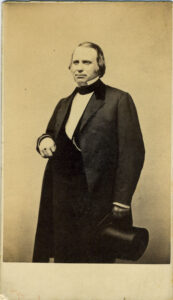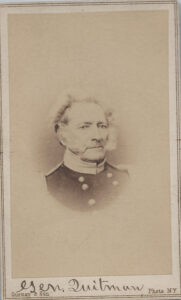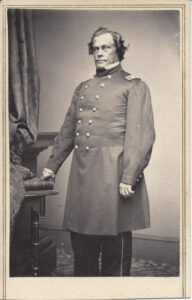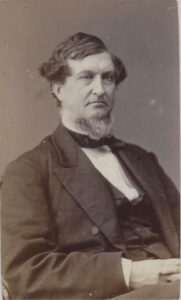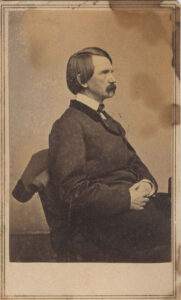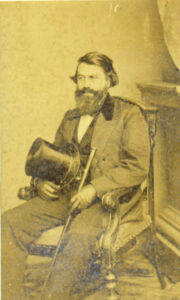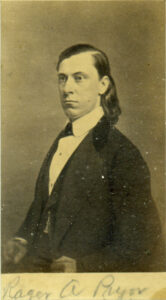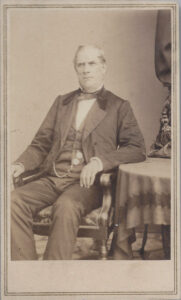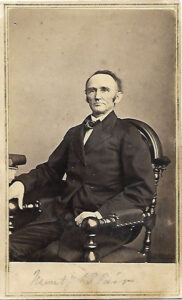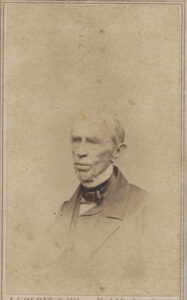Section #12 - Our Politics
Our Politics
You are there:
a newly independent nation sets out to define how a government of the people, by the people and for the people will operate.
After nearly 175 years of British rule over their affairs, America wins its independence in 1781 and begins its experiment in self-government under the Articles of Confederation, a contract quickly proven to be inadequate to the task.
Thus 55 delegates gather at the 1787 Constitutional Convention in Philadelphia to lay out a new improved framework to bring the thirteen existing “sovereignties” into one combined entity. Ironically their work is held in secret, with Secretary James Madison’s heavily redacted official “minutes” not published until 1840. Their efforts, however, yield the new United States of America, operating with three branches of government, the Legislature, Executive, and Judiciary.
While theoretically co-equal, the Legislature is considered most critical to success. It enjoys the power of the purse and its members are chosen every two years. The Executive or President has a four year term, while the high court justices are allowed to serve for life, assuming “good behavior.”
The Founders reject a true democracy in favor of a republic given concerns about “momentary passions” upsetting the thoughtful deliberations on important policy decisions. Those deliberations, they feel, should remain in the hands of elected “representatives,” accomplished men and likely to be property owners like themselves.
But lest this smack of aristocracy, they amend their original Constitution four year later with a Bill of Rights applicable to all citizens:
The Bill of Rights Passed In 1791
| # | Description |
| 1 | Freedom of religion, speech, the press, right to assemble and petition the government. |
| 2 | Right to keep and bear arms and maintain a militia. |
| 3 | Protection from being forced to quarter troops on one’s property. |
| 4 | Protection from unreasonable search and seizure. |
| 5 | Right to due process, to avoid self-incrimination, double jeopardy, unlawful seizure of property. |
| 6 | In criminal cases, right to speedy, public trial by impartial jury where crime committed, confront accusers, have legal adviser. |
| 7 | The right to trial by jury also extends to civil (i.e. non-criminal) cases, involving $20 or more. |
| 8 | Prohibits excessive bail charges for accused, and cruel and unusual punishment for the guilty. |
| 9 | The enumeration in the Constitution of certain rights shall not be construed to deny or disparage others retained by the people. |
| 10 | The powers not delegated to the United States by the Constitution, nor prohibited by it to the States, are reserved to the States respectively, or to the people. |
Before the Bill of Rights is fully ratified, George Washington is sworn in as the first president of the United States. This takes place on Tuesday, April 30, 1789, after a delay to record all ballots, at the Federal Building in the capital city of New York.
Washington will serve two four year terms in office, during which time the United States begins to live under its constitution and stakes out its place among the three global powers – Britain, France and Spain – who together still claim ownership of over 90% of the 9.5 million square miles of North America.
To survive surrounded on all sides by foreign threats, Washington calls for strict neutrality in regard to international conflicts along with a spirit of unity across the domestic front. In his farewell letter to the nation in September 1796 he sounds these themes including a particular warning against the emergence of rival political parties prioritizing a drive for their own power over the public good:
It is of infinite moment that you should properly estimate the immense value of your national union to your collective and individual happiness.
Think and speak of (your union) as of the palladium of your political safety and prosperity;
With slight shades of difference, you have the same religion, manners, habits and political principles. You have in a Common cause fought and triumphed together; the independence and liberty you possess are the work of joint counsels…common sufferings and successes.
Beware of cunning, ambitious, and unprincipled men…subverting the power of the people and usurping for themselves the reins of government.
(Beware) of the danger of Parties in the State, with particular reference to the founding of them on geographical discriminations…The alternate domination of one faction over another, shaped by the spirit of revenge, natural to party dissension…is itself a frightful despotism…
However, Washington will be the only officially Independent president in American history – and by the time he departs, the political parties he fears are already well established. From the third national election onward they will play a critical role in deciding the nation’s fate.
These political parties materialize around differences of opinion about which government policies to pursue. Some differences can be philosophical in nature: states’ rights vs. federal authority. Others may focus on foreign affairs (war or peace) or on domestic conflicts (tariff rates). While a few parties will emerge around a single issue, most involve a more varied array.
A party begins by formulating a “platform” which focuses on key issues facing the country and its proposed policy solutions on each. It then nominates a “ticket” of candidates to run on its platform for government offices, locally, statewide and nationally.
At first these candidates are chosen at local “caucuses” presided over by leading party members. These small and fairly informal caucuses will prevail until 1832 when “national conventions” first appear.
The promise of government “by the people” is then carried out through scheduled elections between candidates of the opposing parties. Whoever gets the most votes cast is declared the winner.
The only exception being the president who is required to achieve an absolute majority in the special “Electoral College,” set up to insure that smaller states still have impact on the choice. Thus each state’s allocation of votes is based not on its total population, but on the number of seats it has in Congress. For example, tiny Delaware has only 1.6% of the U.S. population but 4.3% of the Electoral College Votes.
| Total # | % of U.S. | |
| Population | 62,273 | 1.6% |
| # House Seats | 1 of 65 | 1.5 |
| # Senate Seats | 2 of 26 | 7.7 |
| # Electoral Votes | 3 of 69 | 4.3 |
Campaigns for president become more intense over time. At first, candidates are expected to stay quietly above the fray, not appearing too covetous of the office. Making their case is thus left with “surrogates,” party members who excel at making “stump speeches” at local rallies. Party parades are common fare, with banners raised high and touting party slogans (“Tippecanoe and Tyler Too!”). Newspapers quickly align with parties, running editorials for their man and even printing paper ballots for their ticket used on election days. In return, papers who back winners often derive revenue from “official government announcements” placed by their party.
Surprisingly, public participation in the presidential elections is quite limited up until 1828, when the “turn-out” jumps sharply. This is probably explained by the initial restriction allowing only “men with property” to vote.
Presidential Election Turn-Out (% of eligible voters who cast a ballot)
| 1788 | 1792 | 1796 | 1800 | 1804 | 1808 | 1812 | 1816 | 1820 | 1824 | 1828 | |
| Turn-out | 11.6% | 6.3 | 20.1 | 32.3 | 23.8 | 36.8 | 40.4 | 16.9 | 10.1 | 26.9 | 57.3 |
| Winner | GW | GW | JA | TJ | TJ | JMad | JMad | JMon | JMon | JQA | AJ |
Political parties come and go with some regularity early in America’s history.
In fact, a total of four different “political systems” materialize between 1788 and 1860.
The “First System” reflects philosophical differences about the proper division of power between the central government and the individual states. The division is already evident at the 1787 Constitutional Convention and will persist to the Civil War. The original protagonists here are Alexander Hamilton and Thomas Jefferson.
Hamilton favors a more expansive federal role in affairs, for two reasons in particular: to insure swift unified action should another war break out; and to secure the government funding needed for the industrialized economy he hopes to build. He fears that individual states will be slow to react to a foreign attack and reluctant to invest money in national infrastructure projects.
Meanwhile Jefferson fears that Hamilton secretly supports a British-like monarchy in America. As a supporter of an agrarian economy he downplays the need for industrialization. He also argues that issues facing the nation are best solved by people closest to the problems, i.e. those experiencing them at the State level. One of these issues, of course, is slavery — and as a southerner and a slave owner himself, he is intent on avoiding federal interference.
Thus America’s 1st Political System pits Federalists like Hamilton against Anti-Federalists (also known as Democratic-Republicans or States’ Rights men) like Jefferson.
America’s 1st Political System (1790-1828)
| Federalists | Democratic-Republicans | |
| Political Avatar | Hamilton | Jefferson |
| Geographical tilt | New England | South |
| Political Philosophy | Republic/leader class | Democracy/common man |
| Concentration of power | Washington/federal control | De-centralized/state’s rights |
| Important to avoid | Indecision during warfare | Recreation of a monarchy |
| Economic vision | Diversify/industrialize | Agriculture/farming |
| Finance | Soft money/federal bank | Hard money/state banks |
| Foreign tilt | Pro-Britain | Pro-France |
The second president, John Adams of Massachusetts, is a dedicated Federalist, who narrowly defeats Jefferson in 1796. But he comes with a prickly personality and initiates the 1798 Sedition Acts that many say are aimed at silencing criticism of his policies. Adams enjoys a majority in both chambers of Congress in 1799, but then loses them and the presidency in 1800.
Presidential Elections of 1796 and 1800
| Year | Party | Candidate | Pop Vote | %* | EV |
| 1796 | Democratic-Republican | Thomas Jefferson | 35,726 | 53.4% | 71 |
| Federalist | John Adams | 31,115 | 46.6 | 68 | |
| 1800 | Democratic-Republican | Thomas Jefferson | 45,467 | 60.5 | 73 |
| Federalist | John Adams | 29,621 | 39.5 | 65 |
Congregational Make-up from 1797 to 1803
| House | 1797 | 1799 | 1801 | 1803 |
| Federalist | 47 | 60 | 38 | 39 |
| Democratic-Republican | 59 | 46 | 68 | 103 |
| Senate | ||||
| Federalist | 20 | 23 | 17 | 9 |
| Democratic-Republican | 10 | 9 | 14 | 22 |
| Congress # | 5 | 6 | 7 | 8 |
| President | JA | JA | TJ | TJ |
Once in office, Jefferson makes one crucial mistake that cuts into his majority in Congress. In trying to keep America out of the start of the Napoleonic Wars, he settles on the 1807 Embargo Act which bans all American merchant ships from sailing to any foreign port. The effect on the export trade is devastating and the GDP drops by 5% before the order is rescinded.
But Jefferson’s win ushers in the 24 year presidential dominance of the “Virginia Dynasty,” which includes two terms each for Founding Fathers James Madison and James Monroe.
The explanation for this seems to lie in the Federalists loss of credible candidates after Adams. Alexander Hamilton is dead after a fatal duel with Vice-President Aaron Burr in 1804. None of the back-ups are up to the task, the first being South Carolina planter, Charles C. Pinckney, who records three losses in a row, first as Adams’ running mate in 1800 and then for the top job in 1804 and 1808. Then there is the New Yorker, Rufus King, twice on the losing ticket under Pinckney and then handily beaten on his own in 1816.
The only threat to the Virginia Dynasty comes in 1812, five months after Madison is persuaded to fight Britain a second time by congressional “warhawks” led by Henry Clay, the 25 year old Speaker of the House, and the powerful John C. Calhoun of South Carolina. When the conflict begins with serious defeats in western Canada, the Federalist Mayor of New York City, DeWitt Clinton, ends up within 8,000 votes of winning that year’s popular vote.
The war itself rattles Madison. After the British sack Washington in the summer of 1814 a convention of New England businessmen threatens secession. Financial troubles force him to re-instate the U.S. Bank shut down by Jefferson in 1811, and he leaves office with America’s first great depression looming.
But the War of 1812 ends in 1815 when General Andrew Jackson wins national recognition for his famous victory at New Orleans. After that Madison hands the baton to James Monroe who defeats King in 1820 and wins unopposed in 1820.
Presidential Elections of 1796 and 1800
| Year | Party | Candidate | Pop Vote* | %* | EV |
| 1808 | Democratic-Republican | James Madison | 124,732 | 64.8 | 122 |
| Federalist | Charles C. Pinckney | 62,431 | 32.4 | 47 | |
| 1812 | Democratic-Republican | James Madison | 140,431 | 50.4 | 128 |
| Federalist | DeWitt Clinton | 132,781 | 47.6 | 89 | |
| 1816 | Democratic-Republican | James Monroe | 76,592 | 68.2 | 183 |
| Federalist | Rufus King | 34,740 | 30.9 | 34 | |
| 1820 | Democratic-Republican | James Monroe | 87,343 | 80.6 | 231 |
| Random opposition | 21,023 | 19.4 | 0 | ||
Throughout the entire “Virginia Dynasty” the Democratic-Republicans hold wide majorities in both chambers of Congress. First behind Jefferson and Madison.
Congressional Trends: 1805 – 1815
| House | 1805 | 1807 | 1809 | 1811 | 1813 | 1815 |
| Federalist | 28 | 26 | 48 | 36 | 68 | 64 |
| Dem-Republican | 114 | 116 | 94 | 107 | 114 | 119 |
| Senate | ||||||
| Federalist | 7 | 6 | 7 | 7 | 8 | 11 |
| Dem-Republican | 27 | 28 | 27 | 26 | 28 | 22 |
| Congress # | 9 | 10 | 11 | 12 | 13 | 14 |
| President | TJ | TJ | JM | JM | JM | JM |
Then in support of Monroe.
Congressional Trends: 1817 – 1823
| House | 1817 | 1819 | 1821 | 1823 |
| Federalist | 40 | 28 | 32 | 24 |
| Dem-Republican | 144 | 158 | 155 | 189 |
| Senate | ||||
| Federalist | 13 | 9 | 5 | 3 |
| Dem-Republican | 25 | 30 | 38 | 44 |
| Congress # | 15 | 16 | 17 | 18 |
| President | JMon | JMon | JMon | JMon |
Monroe’s time in office is called the “Era of Good Feelings,” with the constant threat of foreign invasions ended and political contentiousness at low points. Despite this apparent tranquility two issues prove troublesome. First is the nation’s first prolonged depression, the “bust cycle” which follows the “boom” years building up to and through the 1812-15 war.
Then a challenge in the House to the admission of Missouri as a designated “slave state.” The author is James Tallmadge, a Democratic-Republican from New York, who agrees to admit Missouri, but only…
Provided, that the further introduction of slavery or involuntary servitude be prohibited,
except for the punishment of crimes… and that all children born within the said State, after
the admission thereof into the Union, shall be free at the age of twenty-five years
The House passes the measure by an 87-76 vote, skewed ominously along regional lines: northerners in favor 86-10 and southerners opposed 66-1. The Senate then votes it down with five northerners joining the opposition. Despite this, Jefferson likens the Tallmadge Amendment to “a fire bell in the night,” threatening to re-open the bitter conflicts over slavery present throughout the 1787 Convention.
As the 1824 election approaches, cracks appear within the Democratic-Republican Party. There are no more Founding Fathers left to head the ticket, and so four candidates appear on the ballot – and none of them achieve the Electoral College majority needed to win.
Results of the Stalemated Election of 1824
| Party | Candidate | Pop Vote* | %* | EV |
| Democratic-Republican | Andrew Jackson | 151,271 | 41.4% | 99 |
| Democratic-Republican | John Quincy Adams | 113,122 | 30.9 | 84 |
| Democratic-Republican | William Crawford | 40,856 | 11.2 | 41 |
| Democratic-Republican | Henry Clay | 47,531 | 13.0 | 37 |
JQ Adams, son of the second president, captures the northeastern states; Crawford his home state of Georgia along with Virginia; and Clay carries his Kentucky home and Ohio. But the strongest showing belongs to Andrew Jackson, hero of New Orleans and son of the new west.
Absent a clear winner, the election is “thrown into the House of Representatives,” where each of the 24 states is allocated one vote, with 13 required for victory. What happens next solidifies lasting political animus between two national icons and leads to America’s “2nd Political System.”
The two icons are Henry Clay and Andrew Jackson, who have lots in common. Both are self-made men, known for their presidential ambitions, their short tempers and histories of violent dueling, and their disdain for each other. Clay finds Jackson unfit to even run:
I cannot believe that killing 2500 Englishmen at N. Orleans qualifies for the various,
difficult and complicated duties of the Chief Magistry.
Jackson, who later expresses regret for “not having shot Clay,” weighs in:
Clay is the basest, meanest scoundrel that ever disgraced the image of his god.
But as Speaker of the House in 1824, Clay has tremendous power over the special election outcome, and he uses it to hand the victory to JQ Adams. Subsequently Adams selects Clay as his Secretary of State, a stepping stone to possible succession. Jackson publicly declares this a “corrupt bargain” and swears revenge.
While Adams ascends to the White House, his supporters remain in the minority in Congress.
Congress in 1825 – 1827
| House | 1825 | 1827 |
| Pro-Adams | 109 | 100 |
| Anti-Adams | 104 | 113 |
| Senate | ||
| Pro-Adams | 20 | 20 |
| Anti-Adams | 25 | 27 |
| Congress # | 19 | 20 |
| President | JQA | JQA |
Jackson’s payback comes in two doses. The first by way of frustrating every attempt by Adams and Clay to pass the legislation they want for federal infrastructure projects. The second by soundly defeating Adams in the next election.
The 1828 contest marks a radical jump in partisan mudslinging. Jackson’s running mate, Martin Van Buren, has party newspapers paint Adams as part of a privileged eastern clique, out of touch with the common man, and intent on lining their own pockets. His strait-laced moral character is then called into question for wasting taxpayer money on “gambling devices” – a billiards table for the White House – then for “procuring” an American woman for Tsar Alexander I while serving in Moscow.
Adams’ surrogates return fire claiming that Jackson is temperamentally and morally unfit to be president. His long record of violent behavior is cited:
- 1806 kills James Dickinson in a duel over a horse racing wager
- 1806 attempts to stab his former business partner on the street in Nashville
- 1813 wounded in saloon shoot-out with Jesse and Thomas Hart Benton
- 1814 accused of murdering Indian non-combatants at Battle of Horseshoe Bend
- 1815 approves execution of six American militiamen for stealing food at Mobile
- 1818 executes two British nationals in Florida accused of selling guns to local tribes
Then the real low point, the accusation that Jackson is an adulterer who married his wife Rachel before she was granted a divorce. Jackson responds publicly to the slander, but Rachel feels that her reputation is lost for good and her health deteriorates. She dies of a heart attack on December 22, 1828, before her husband is inaugurated.
The combination of campaign controversy and the end of a property requirement for voting leads to a more than three-fold jump in the turn-out, and a decisive victory for Jackson.
Election of 1828
| Party | Candidate | Pop Vote* | %* | EV |
| Democrat | Andrew Jackson | 638,348 | 55.5% | 178 |
| National-Republican | John Quincy Adams | 507,440 | 44.0 | 83 |
Jackson’s election shifts public attitudes toward Washington. He is the first president from outside Virginia or Massachusetts, and his brand of “common man” populism is in sharp contrast to his more elitist predecessors. The shift is evident in his election night celebration in the White House where revelers burst in and rowdy behavior dominates. His opponents characterize the crowd as a mob.
Once in power, Jackson proceeds in military style to achieve his priorities:
- Above all else, secure the borders and preserve the sacred Union.
- Relocate Indian tribes west, so that white settlers can occupy the southeast.
- Shut down the US Bank, ending its spendthrift, eastern elite focused manipulations.
- Restore tight fiscal constraints, avoid inflation and pay off the national debt.
- Protect the well-being of the many from the avarice of the few.
Jackson’s presidency sparks the nation’s 2nd Political System, as opponents organize new parties to defeat him in 1832. His turn-coat Vice-President, John Calhoun, leads a new “Nullifier Party” aimed at unifying the South against the existing tariff hurting export sales of raw cotton. A political strategist named Thurlow Weed forms an Anti-Masonic Party claiming that its members – especially “Master” Andrew Jackson – are loyal to the lodge rather than the constitution.
But it is Henry Clay who begins to pull together a coalition capable of challenging the Democrats over the next twenty years. He calls his party the “Whigs” after the British coalition who stand in opposition to an absolute monarchy, the analogy being “King Andrew.”
America’s Second Political System: 1828-1848
| Jackson’s Democrat Party | Clay’s Whig Party | |
| Political Roots | Jefferson | Hamilton |
| Political Philosophy | Democracy/common man | Republic/leader class |
| Core Constituency | Small farmers | Farmers + city wage earners |
| Core Geography | South + West | Border + Northeast |
| Labor | Manual power | Manual + machines |
| Government Power | De-centralized/state’s rights | Washington/federal control |
| Federal spending | Limit it/balance budget | Invest in infrastructure |
| Tariff | Lower and on fewer goods | Higher to protect US mfrs. |
| Price to buy US land | Lower | Higher to fund investments |
| Money | Hard/specie to avoid inflation | Soft/paper to support capitalism |
| US Bank | Opposed/rigged for privileged | Supportive/control currency |
| Capitalism | Suspicious/elites/corruption | Fundamental to growth |
As the election approaches, America is also in the grip of the “Second Great Awakening” which mirrors the first campaign a century earlier. It is marked by religious revival meetings with ‘spontaneous conversions” followed by a host of reform movements aimed at social stains such as drunkenness, child labor, prison and workhouse abuses and slavery. It is during this period that the Abolitionist crusade begins, including John Brown’s public vow in his Ohio Church:
Here, before God, in the presence of these witnesses, from this time, I consecrate
my life to the destruction of slavery!
Clay is an astute vote counter throughout his career and in 1832 recognizes that his fledgling Whig Party cannot defeat Jackson on its own. He therefore enlists candidates from the South’s “Nullifier” Party and the East’s Anti-Masons to attack Jackson across three fronts. But the now 65 year old General easily brushes aside the challengers.
Election of 1832
| Party | Candidate | Pop Vote* | %* | EV |
| Democrat | Andrew Jackson | 701,780 | 54.2% | 219 |
| Whig | Henry Clay | 484,205 | 37.4 | 49 |
| Anti-Masonic | William Wirt | 100,715 | 7.8 | 7 |
| Nullifier | John Floyd | NA | NA | 11 |
And the Democrats retain their control over congress.
Congressional Trends: 1817 – 1823
| House | 1829 | 1831 | 1833 | 1835 |
| Anti-Jackson | 72 | 66 | 63 | 80 |
| Pro-Jackson | 136 | 126 | 143 | 148 |
| Anti-Mason | 5 | 17 | 25 | 5 |
| Null | 4 | 9 | 8 | |
| Senate | ||||
| Anti-Jackson | 22 | 20 | 23 | 24 |
| Pro-Jackson | 26 | 26 | 21 | 22 |
| Null | 1 | 2 | 2 | |
| Congress # | 21 | 22 | 23 | 24 |
| President | AJ | AJ | AJ | AJ |
Several important events occur during Jackson’s second term. In 1833 he shutters the Second Bank of the United States, convinced that it serves the interests of its private shareholders above those of the public or the country.
In April 1836, after massacres at the Alamo and Goliad, Sam Houston wins the Battle of San Jacinto and announces the Annexation of Texas. Included there is the restoration of slavery, banned by the Mexicans in 1828 and by Britain in 1833. The Texans immediately ask to join the United States, but Jackson refuses, fearing that such a move would provoke a North-South conflict that could threaten his precious Union.
In May, Southern members of the House pass a “gag rule” attempting to silence the reading of all petitions criticizing slavery. None other than JQ Adams, who returns to Congress following his presidential loss, refuses to comply, and becomes the anti-slavery champion in DC for the next 15 years.
Jackson’s final cause in his second term is an attempt to protect the value of the dollar against growing inflation due to speculative purchases of western land. His July 1836 “Specie Circular” requires that future payments for public domain acreage be made in minted gold or silver coins, not paper dollars. But this move signals a lack of official credibility in soft money and results in a panic as people try to redeem their banknotes for coins. This monetary crisis impacts the 1836 presidential campaign.
Clay tries another tactic this time by running four regionally popular Whig candidates against Jackson’s chosen successor, Martin Van Buren. “Little Matty” is famed for creating a “political machine” in New York known as the “Albany Regency” which utilizes patronage and other pay-offs to lock in power.
Despite Whig victories in 12 of the 26 states, Van Buren manages a narrow win in 1837 – only to be plagued throughout his term by the recession he inherits from Jackson.
Election of 1836
| Party | Candidate | Pop Vote* | %* | EV |
| Democrat | Martin Van Buren | 764,176 | 50.8 | 170 |
| Whig | William Henry Harrison | 550,816 | 36.6 | 73 |
| Whig | Hugh White | 146,109 | 9.7 | 26 |
| Whig | Daniel Webster | 41,201 | 2.7 | 14 |
| Whig | Willie Mangum | NA | NA | 11 |
With the economic downturn weighing on the Democrats, they pin their hopes in 1840 on a second term for Van Buren. Meanwhile the Whigs nominate an aging military hero of their own, William Henry Harrison. He is the son of a Founding Father from Virginia, who moves to Indiana and wins national fame for triumphs over the Shawnee Chief Tenskwatawa at Tippecanoe in 1811 and Tecumseh at the Thames in 1812. Almost as an afterthought he is joined on the Whig ticket by John Tyler of Virginia for regional balance.
The 1840 run for the White House is regarded as the first “modern election campaign” – one decided less on issues than on the personal stories of the opponents.
The Democrat’s strategy lies in branding Harrison as a decrepit old man, out of touch with current events and more suited to “sitting in his log cabin and drinking hard cider” than to serving as president.
The Whigs, however, twist this image in their own favor. Ignoring his landed-gentry roots on the Virginia plantation, they cast him as a genial common man of the people and hand out log cabin shaped bottle of hard cider to highlight their campaign. Van Buren is labeled “Van Ruin” on their banners and in their press, and Harrison breaks the historical taboo and personally takes to the stump on his own behalf.
The result is a sweeping victory for the Whigs.
Election of 1840
| Party | Candidate | Pop Vote* | %* | EV |
| Whig | William Henry Harrison | 1,275,390 | 52.9 | 234 |
| Democrat | Martin Van Buren | 1,128,854 | 46.8 | 60 |
In addition to taking the presidency, the Whigs also flip both chambers of Congress in their favor.
Congressional Trends: 1837 – 1843
| House | 1837 | 1839 | 1841 | 1843 |
| Whig | 100 | 116 | 142 | 73 |
| Democrat | 132 | 126 | 98 | 146 |
| Anti-Mason | 7 | |||
| Null | 2 | 6 | ||
| Senate | ||||
| Whig | 17 | 20 | 27 | 23 |
| Democrat | 34 | 28 | 23 | 27 |
| Null | 1 | |||
| Congress # | 25 | 26 | 27 | 28 |
| President | MVB | MVB | WH/JT | JT |
Harrison is eager to take charge and begins by delivering the longest inaugural address in history, one hour and forty-five minutes on a brisk day where he eschews an overcoat, hat and gloves to demonstrate his vitality. He names his cabinet and establishes his routine which includes a daily unaccompanied walk around the capital. A downpour drenches him, followed by a severe cold, a series of counterproductive medical procedures by his physician, and his death after one month in office.
The nation is stunned, except for his running mate, John Tyler, who races to Washington to claim the mantel as the rightful successor. He bases his claim on Article II, Section 1 of the Constitution saying “the Vice-President shall act as President in the case of his death.” Those who oppose Tyler argue that he should “act” only until a new election can be held quickly, but Tyler ignores this and charges ahead.
The result is disastrous for the entire Whig platform, Clay’s “American System,” designed to plow federal funds into infrastructure upgrades and build the industrial economy. Tyler vetoes one piece of Whig legislation after another, revealing his true political credentials as a Jacksonian Democrat. For this the Whigs label him “his Accidency” and kick him out of the party. But the damage is done and almost none of the Whig promises to their voters are carried out.
A determined Henry Clay hopes to get his plan back on track in 1846 and heads the Whig ticket in what will be his single best chance at the presidency. The Democrats are troubled by their recent losses and experience internal divisions. Van Buren loyalists, especially in New York, want to nominate him again. But an emerging faction, known as the “Young Americans Movement,” hopes to tilt the party westward, with a focus on opening the Mississippi Valley to commerce and acquiring land from Mexico all the way to the west coast.
This expansion wish, known as “Manifest Destiny,” is very popular at the time, particularly with Southern leaders who view it as fertile ground for new plantations and the very profitable sale of their excess “bred” slaves. This group is led in the Senate by Lewis Cass of Michigan and in the House by the rising star, Stephen A. Douglas. Both men are slave-holders, as is Clay.
After Van Buren and Cass are stalemated through eight ballots at the Democrat convention, the delegates suddenly select James Knox Polk to head the ticket. While referred to as a “dark horse,” Polk is actually a Tennessee protégé of Andrew Jackson.
The campaign is vigorously fought with both candidates actively engaged, and personal attacks now becoming the norm. The Whigs call Polk a “puppet of Jackson” who wants to annex Texas and go to war with Mexico to expand slavery. The Democrats concentrate on criticizing Clay as “unpatriotic” for opposing the annexation at first, and then as a “flip-flopper” for eventually favoring it.
The outcome is a narrow victory for Polk, the first ever where the winner gets less than 50% of the popular vote. Some historians attribute Clay’s crucial 5,000 count loss in New York to the 15,000 garnered by the Liberty Party abolitionist, James Birney.
Election of 1844
| Party | Candidate | Pop Vote* | %* | EV |
| Democrat | James Polk | 1,339,494 | 49.5 | 170 |
| Whig | Henry Clay | 1,300,005 | 48.1 | 105 |
The Democrats also control the 29th Congress before suffering a major defeat in the 1847 mid-term owing to growing controversy over the outcome of the war he initiates with Mexico.
Congress in 1845-47
| House | 1845 | 1847 |
| Democrats | 140 | 109 |
| Whigs | 81 | 116 |
| Other | 6 | 1 |
| Senate | ||
| Democrats | 19 | 25 |
| Whigs | 35 | 33 |
| Other | 1 | |
| Congress # | 29 | 30 |
| President | JP | JP |
One week before Tyler leaves office Texas is annexed, a preamble to Polk’s pivotal term which will ordain the Civil War. He is in office for two months when fighting breaks out at Matamoras, along the north bank of the Rio Grande, between US forces led by Zachary Taylor and the Mexican army.
Congress declares war on May 13 and the American forces move into the interior of Mexico winning one victory after another. As the cost of the war grows, an appropriations bill for another $2 million to fund the war is called up in the House. At which point David Wilmot, a first year Pennsylvania congressman offers a condition for his support:
Provided, as an express and fundamental condition to the acquisition of any territory from
the Republic of Mexico by the United States, by virtue of any treaty which may be
negotiated between them, and to the use by the Executive of the moneys herein
appropriated, neither slavery nor involuntary servitude shall ever exist in any part
of said territory, except for crime.
When the “Wilmot Proviso” passes with overwhelming cross-party support from northern members, it sends shockwaves across the South. The message being that the North is ready to ban the spread of slavery into the new western lands, an existential threat to the future growth of the southern economy.
Votes On Wilmot’s Proviso in 1846
| By Region | Yes | No |
| North | 83 | 12 |
| South | 2 | 68 |
| Total | 85 | 80 |
| By Party | ||
| Democrats | 52 | 55 |
| Whigs | 28 | 25 |
| American | 5 | 0 |
| Total | 85 | 80 |
Portents of this outcome have been apparent for years, first in the 1820 Tallmadge Amendment and then in a series of “anti-black codes” passed by state legislatures in Ohio, Indiana and Illinois.
Despite some growing empathy toward the plight of the slaves, white northern racial prejudice is dominant and intense, and the public aim is to segregate black people in the south and “cleanse” them from the north.
Some southern leaders like John C. Calhoun have seen this message all along, but have been unable to convince the region’s moderate politicians of the threat. But the Wilmot Proviso sounds a note of rebellion – even though the Wilmot measure gets stalled in the Senate.
Fighting in the Mexican War is over a year later and the subsequent Treaty of Hildago, not finalized until 1848, cedes vast acres of land across the southwest. Along with the question,
will slavery be allowed there or not?
As for Polk, he is exhausted by his term in the White House, and true to his promise, declines to run in 1848. He takes a brief victory tour across the south and dies three months after leaving DC.
This leaves the next election wide open to all comers and four different factions engage, with one, the Free Soil Party, signaling the start of America’s 3rd Political System.
The Free Soil Party represents one more attempt by Salmon Chase to finally defeat the Democrats. While personally an abolitionist, he recognizes that most northerners view all black people as inferior and want nothing to do with them. So instead of fixing on slavery per se, he conjures up another angle that might succeed. It calls upon white settlers to oppose the Democrats on the grounds that expanding slavery to the west will hurt their chances for success. That wealthy plantation owners will outbid them for the best land, and slave labor will undercut the prices they can get for their crops.
Instead of appealing to racism, Chase asks party members to “protect the dignity of free white labor” –under the banner of “Free Soil, Free Speech, Free Labor, Free Men.”
America’s Third Political System: 1848-1852
| Democrats | Free Soil | Whigs | Liberty | |
| Geographic base | South | North/West | North | Northeast |
| View of slavery | Positive good for society | Demeans white labor | Morally wrong | Abomination |
| Expanding to west | Absolute necessity | Fierce opposition | Ban spread | Abolish everywhere |
| DC strength | South bloc vote in Senate | House majority position | American System | None |
| Avatar | Stephen Douglas | Salmon Chase | Henry Clay | James Birney |
| Label | Slavocracy | White Supremacy | Moral Idealists | Radicals |
Chase also sees an opportunity for the Free Soil Party to peel off northern Democrats angered in 1844 by the South’s maneuver to nominate Polk. Included here are the so-called New York “Barn Burners” who abandon the Democrats to back the surprise Free Soil Party nominee, Martin Van Buren.
For the Democrats, the Wilmot vote signals that their only path to the presidency resides with a northern born candidate who will embrace the wishes of the South, especially on the expansion of slavery. Their next three nominees will all follow this pattern which earns them the nickname of “Doughfaces” for their pliability. The first Lewis Cass who, along with Stephen Douglas, represents the Young American Movement.
The Whigs are optimistic about their chances in 1848 and they turn to their second military hero in General Zachary Taylor. Both the party and Taylor himself seem unclear as to his Whig credentials, but his reputation as hero of the Mexican War, and the presence of the third party, are sufficient for him to carry the day with a plurality of the popular votes cast.
Election of 1848
| Party | Candidate | Pop Vote* | %* | EV |
| Whig | Zachary Taylor | 1,361,396 | 47.3 | 163 |
| Democrat | Lewis Cass | 1,223,460 | 42.5 | 127 |
| Free Soil | Martin Van Buren | 291,501 | 10.1 | 0 |
But the Democrats are not dead yet and they retain their majorities in Congress.
Congress in 1849 – 1851
| House | 1849 | 1851 |
| Democrats | 115 | 117 |
| Whigs | 104 | 81 |
| Free Soil | 8 | 7 |
| Other | 0 | 22 |
| Senate | ||
| Democrats | 33 | 35 |
| Whigs | 22 | 18 |
| Free Soil | 2 | 2 |
| Other | 0 | 1 |
| Congress # | 31 | 32 |
| President | ZT/MF | MF |
Although Taylor is a Virginian by birth and the owner of over 200 slaves on three plantations, he soon shocks the South by announcing his opposition to the further spread of slavery:
The people of the North need have no apprehension of the further extension of slavery
….If the congress sees fit to pass (the Wilmot proviso) I will not veto it.
The relevance of his disclosure is amplified as gold is discovered in California and the mad rush of miners and settlers there leads to an application for statehood. When Taylor signals his support for its admission as a “Free State” – a move which would tip the delicate Senate balance on slavery – moderate southerners like Howell Cobb and Robert Toombs express their alarm.
Henry Clay and Stephen Douglas now step in to formulate a compromise over California, but it stalls as John Calhoun tries again to rally the South on behalf of secession. But the time is not yet right and Calhoun passes away at age sixty-eight on March 31, 1850.
In the midst of this California turmoil, Zachary Taylor also dies. Some trace his sudden death to overindulging on iced milk and raw vegetables at a July 4 celebration. Others suspect arsenic poisoning by angry southerners, or botched medical treatments. Later day theories posit that Taylor, like Harrison before him, succumbs to typhoid fever from tainted Potomac River water piped into the White House. Whatever the reason, another Whig president is dead, in this case only 16 months after taking office.
Enter Vice-President Millard Fillmore, an anodyne figure who fills out Taylor’s term amidst ongoing strife over slavery. In the North, prejudices against the black race remain fixed, but a widening number of previously hard hearts are feeling that the institution of slavery is morally wrong.
Some of this shift traces to courageous reformers who found the American Anti-Slavery Society in 1833 and who join Lloyd Garrison, Lucretia Mott and Fred Douglass in risky tours across the country lecturing against human bondage. An Underground Railroad aids run-away escape to freedom, and several court cases go against slave-holders. The 1851 publication of Uncle Tom’s Cabin builds public empathy and more aggressive abolitionist voices (Giddings, Sumner, Hale, others) are heard in Congress after the early champion, JQ Adams, dies in 1848.
The South responds with its own set of “anti-Tom novels,” theologians tracing slavery to the Bible, pseudo-scientists “proving” that blacks are a separate and inferior race, and politicians arguing that “slavery is a positive good” offering protection from the evils of northern factory labor and the only chance for their captives to achieve eternal salvation.
Henry Clay gives up after failing to pass his 1850 Compromise bill and leaves DC, ending his forty years of service. He retires to Kentucky until his death in 1852. Douglas then steps in, chops the Omnibus Bill into pieces, and passes them one at a time. California’s admission as a Free State is offset by an updated Fugitive Slave Act that requires northerners to actively participate with bounty hunters to return run-aways. This requirement infuriates the public and leads to a series of violent incidents with mobs in Boston attacking jails to release captives.
Douglas’ Act also make a core promise to the South that becomes Democrat Party gospel. It says that “popular sovereignty” (voting by local settlers) will decide the slavery debate, not any federal ban.
Neither region is satisfied with the 1850 Bill. Northerners fear that “popular sovereignty” might restore slavery in their states, and they start to refer to the South as the “Slavocracy.” Southerners are increasingly sure that the North is intentionally trying to ruin their economy and future wealth. A growing number, known as “Fire-Eaters,” demand immediate secession.
Amidst this tension comes the 1852 election. The Whigs reject Fillmore as their nominee and choose another military man, General Winfield Scott, who proves to be a futile campaigner.
They are also hurt by defectors to the new America Party (or “Know Nothings”) who see “their nation” threatened by a burst of Catholic immigrants mostly from Ireland and Germany. Their platform calls for keeping native born Americans in power, those loyal to the Constitution rather than, as they see it, the Pope in Rome.
The result finds the Democrats achieving a landslide win for their first “Doughface” President, Franklin Pierce, a New Hampshire man with strong southern sympathies.
Election of 1852
| Party | Candidate | Pop Vote* | %* | EV |
| Democrat | Franklin Pierce | 1,607,521 | 50.8 | 254 |
| Whig | Winfield Scott | 1,386,943 | 43.9 | 42 |
Stephen Douglas sees the Compromise of 1850 and the election of Pierce as the opportunity he has been waiting for to “open the Mississippi Valley” to commerce and begin work on a transcontinental railroad with a critical hub located on land he owns in Chicago. But first he must gain support from powerful southern committee chairmen who favor a train route along the border with Mexico.
To win them over, Douglas proposes his 1854 Kansas-Nebraska Act, again assuring the South that “Free State/Slave State” decisions in the new territories will be based on “popular sovereignty.” While the bill passes on May 30, 1854, it raises a firestorm among its opponents for “reneging” on the 1820 Missouri Compromise line of demarcation at 36”30” which would have automatically made Kansas a Free State.
One of those outraged is Abraham Lincoln who cites it as a reason to re-enter the political arena.
At this point the race is on to see whether the Kansas Territory will become a Free or Slave State based on Douglas’s “popsov” process. After the first vote in November 1854 is stolen by pro-slavery invaders from Missouri, chaos will reign in the territory over the next four years, and serve as a rehearsal to the Civil War.
Subsequent elections in Kansas end with two competing legislatures in place, each vying for control. Violence breaks out, first in small individual attacks, then a full out military style assault which destroys the Free State town of Lawrence. The abolitionist John Brown responds with his Potawatomie Massacre and the savagery is ongoing.
Back in DC, Pierce stands behind the Pro-Slavery forces and sends three Territorial Governors and U.S. troops who try unsuccessfully to disband the Free State supporters.
In May 1856 the violence in Kansas extends to the halls of Congress. Abolitionist Charles Sumner delivers a vitriolic speech condemning southern actions in Kansas and is then assaulted while sitting at his desk on the floor of the Senate. His assailant is Congressman Preston Brooks of South Carolina who pummels Sumner with his hickory cane and nearly kills him. Brooks is expelled by the House only to be quickly re-elected by those who applaud his attack.
But the general public is not pleased with “Bloody Kansas” and use the mid-terms to send that message to Pierce and the Democrats who lose almost 70 seats in the House. With the Whigs also losing seventeen seats, the only clear cut winner are the Know Nothings who pick up 51 Representatives.
Congress in 1853 – 1855
| House | 1853 | 1855 |
| Democrat | 150 | 81 |
| Whig | 71 | 54 |
| Know Nothing | 51 | |
| Free Soil | 4 | 22 |
| All Others | 12 | 24 |
| Senate | ||
| Democrat | 35 | 33 |
| Whig | 18 | 14 |
| Free Soil | 2 | 2 |
| Know Nothing | 1 | 1 |
| All Others | 0 | 3 |
| Congress # | 33 | 34 |
| President | FP | FP |
The xenophobic Know-Nothings exhibit their strength by electing Nathaniel Banks as their Speaker of the House for the 34th Congress. However their power is short-lived due to an internal schism over whether to oppose the expansion of slavery to the same extent as they oppose more immigration.
The Know Nothing division opens the door for the improbable coalition that becomes the Republican Party.
Ironically it is an aging member of Jackson’s “Kitchen Cabinet,” Francis Blair Sr., who sees the potential to paste together a conglomerate of anti-slavery Know Nothings, Free Soilers wanting the west for white men only, and Conscience Whigs and Abolitionists who oppose human bondage on moral grounds.
The one thing these groups all have in common is a commitment to banning slavery in the west – along the lines originally announced in the 1820 Tallmadge Amendment and again in the 1846 Wilmot Proviso.
As chaos and confusion persist in Kansas, the 4th Political System comes into focus at the nominating conventions in 1856.
America’s Fourth Political System: 1856 – 1860
| Moderate Democrats | Southern Secessionists | Republican Coalition | Unionists | |
| Antecedents | Jackson Democrats | Calhoun Democrats | Free Soil/KN | Whigs |
| Geographic base | North | South | North/West | Border |
| Expanding slavery | Supportive | Essential | Oppose | Extend 36’30” |
| Kansas solution | State | Slave State | Free State | Slave State |
| DC strength | Senate | Presidential grip | U.S House | Seniority |
| Avatar | Stephen Douglas | Jefferson Davis | Henry Seward | JJ Crittenden |
The split within the Know-Nothings becomes official at their February session, with the slavery focused “New York Seceders” walking out. That leaves the mainstream members who reassert their anti-immigrant platform and select ex-Whig Millard Fillmore to head the ticket.
The troubled Democrats need sixteen ballots to choose their nominee. Franklin Pierce’s hopes slip on the third round and his backers switch to Stephen Douglas. When he too stalls out, the nomination goes to James Buchanan of Pennsylvania, a known “Doughface” carried in by his solid southern bloc.
Finally there is the first Republican convention in June. A series of prior maneuvers to attract Know Nothing dissidents adds to their chances, but political pros like Thurlow Weed are convinced that the party cannot beat Buchanan in the Fall. He talks the leading contender, Henry Seward, out of running and the nomination goes on the first ballot to John C. Fremont. He has achieved national prominence as The Pathfinder for his exploratory adventures to the west coast and for his military role in leading the “Bear Flag Revolt” seizing California from the Mexicans in 1846.
This time all three candidates decide to remain in the background and leave the campaigning to their supporters. A new promotional feature appears in the form of elaborate wood-cut cartoons that appear in newspapers with “bubble quote campaign slogans.” These try to visually contrast the opponents.
The Republican versions portray “Old Buck” as a doddering, whiskerless bachelor in a dressing gown, the anti-hero whose time is past, verses Fremont, seen as youthful, with a beautiful wife by his side (Jesse, daughter of Senator Benton), along with his exploration maps and military rifle. The “Buchaneers” respond, calling Fremont a “Black Republican” abolitionist, claiming that his was an illegitimate birth and that he is secretly a Catholic. The Fillmore supporters cast him as the stable ex-president who will calm the North-South conflicts over slavery.
Both camps conduct rallies where hard cider flows freely and the crowd chants “keep the ball rolling” while pushing around a giant-sized sphere made from cloth and held together by string and tape.
When the election arrives, Weed’s prediction is proven right with Buchanan narrowly winning with 45% of the popular vote. In addition to carrying the southern states, he records narrow victories in New Jersey, Pennsylvania, Illinois and California.
Election of 1856
| Party | Candidate | Pop Vote* | %* | EV |
| Democrat | James Buchanan | 1,836,072 | 45.3 | 174 |
| Republican | John Fremont | 1,342,345 | 33.1 | 114 |
| Know Nothing | Millard Fillmore | 873,053 | 21.5 | 8 |
Seldom does a new president come into office with more sterling credentials than Buchanan and never does one exit with a worse record for failure.
His obsession from the start lies in rewarding his southern backers by insuring that Kansas becomes a Slave State and that plantations are allowed to expand into the west. Three days after his inaugural, he receives apparently good news. The Supreme Court ruling in Dred Scott says that slaves are property with no rights of their own; that the 1820 Missouri line is unconstitutional; and that owners can transport their chattels anywhere in the nation they so choose. Buchanan says the ruling ends the entire debate over slavery, but two justices dissent and his opponents choose to ignore it as judicial overreach.
In Kansas another attempt by Pro-Slavery forces to steal an election is reversed by Governor Robert Walker, ex-Treasury Secretary under Polk. Buchanan’s decision to fire him angers many fellow Democrats. He then makes another grave mistake by trying to force the pro-slavery Lecompton Constitution through Congress despite its clear rejection by the Kansas voters. Stephen Douglas regards this attempt as a violation of his popular sovereignty pledge and blocks Buchanan’s attempts. For this courageous act he earns the label of “traitor” among his southern colleagues and ruins his own chances to become president.
Things get worse. Speculation in potential land sites for a transcontinental railroad triggers the Bank Panic if 1857. Both the president and the Democrats are embarrassed when Kansans again reject the pro-slavery Lecompton constitution. Then Buchanan’s pledge to harness the Mormon’s independent nation in Utah ends with Brigham Young still in power.
Abraham Lincoln asserts himself in Illinois challenging Stephen Douglas for his senate seat. A nationally covered series of seven debates follows. The challenger reiterates his “house divided” position and vows to prohibit slavery in the new territories. Douglas tries to smear Lincoln for opposing the Mexican War, for arguing the blacks are the equal of white men and for espousing abolition. In the end, with Senators still being chosen by state legislatures (up to 1913), the Democrat majority hands the victory to Douglas. But the real winner will be Lincoln who is suddenly recognized by the Republicans as presidential material.
The level of racial prejudice in the North and West is demonstrated in September 1857 when the Oregon Territory applies for statehood. Its constitution not only prohibits slavery but also places a future ban on all black people from residing in the state (Article I, Section 35):
No free negro, or mulatto, not residing in this State at the time of the adoption of this
Constitution, shall come, reside, or be within this State
In October, Kansans adopt their final Wyandotte Constitution — calling for a Free State designation, but dropping a prior restriction, similar to the Oregon clause, excluding all blacks from residency
The president and the Democrats feels the accumulated fury of northern voters in the mid-terms where their prior gains in the House turn into a 50 seat loss and a first-time majority for the Republicans.
Congress in 1857 – 1859
| House | 1857 | 1859 |
| Democrat | 133 | 83 |
| Republican | 90 | 113 |
| Know Nothing | 14 | 5 |
| All Others | 0 | 31 |
| Senate | ||
| Democrat | 34 | 38 |
| Republican | 18 | 25 |
| Whig | 3 | 0 |
| Free Soil | 2 | 0 |
| Know Nothing | 1 | 2 |
| All Others | ||
| Rep | ||
| Congress # | 35 | 36 |
| President | JB | JB |
Next comes the breaking point for the small amount of sectional good will that remains.
On October 15, 1859 the abolitionist John Brown leads a contingent of 22 men into Harpers Ferry, Virginia, intending to enlist a “black army” to attack local plantations and set the slaves free. While his plot is foiled in four days, and he is hanged after a quick trial, Brown’s act is viewed by the South as proof that white northerners are their sworn enemies.
Governor William Gist of South Carolina signals this hostility:
I am prepared to wade in blood rather than submit to inequality and degradation.
By the time the Democrats convene in in Charleston to choose the 1860 ticket, Buchanan is out of the picture and the remaining southern moderates are shifting toward secession from the Union. Douglas is now viewed as an enemy to their cause, and when his platform is approved, nine states walk out of the hall. While efforts to repair the damage limp on, two other conventions are held.
The first includes a set of senior DC politicians, mostly from border states, who christen themselves as the Constitutional Union Party and set out desperately to find a sectional compromise. They favor John J. Crittenden to head the ticket, but he again refuses. The honor then goes to John Bell of Tennessee.
Meanwhile Lincoln’s campaign managers maneuver cleverly to deliver the Republican nomination. They stage the convention in his home state at Chicago, and then pack the house with vocal supporters. His main competitor is New York’s Henry Seward who turned down the nomination in 1856. Some delegates regard him as a radical abolitionist, others simply as a high brow easterner. This in comparison to the down home Lincoln, the rail-splitter, “Honest Abe” who will speak for the common man. Seward enjoys a solid lead on the first ballot, but it slips away by the third when Lincoln gets the nod.
Six weeks pass between the Democrat’s Charleston convention and their follow up in Baltimore. But time only locks in the hostility – and the Northern Democrats nominate Stephen Douglas, while the Southern Democrats choose the sitting Vice-President John Breckinridge.
What follows is simply a race to see if Lincoln can garner enough Electoral College votes to achieve the majority needed to avoid a House run-off. His name is left off of ballots in the south where Breckinridge outpolls Bell. The election takes a surprising turn as Douglas recognizes that Lincoln will win and suspends his campaign to tour the South pleading to save the Union after the election. Douglas is correct here and Lincoln gains the White House albeit with only 39.8% of the popular vote. By the end, the Little Giant of Illinois is exhausted and ill; he will be dead six months later.
Election of 1860
| Party | Candidate | Pop Vote* | %* | EV |
| Republican | Abraham Lincoln | 1,865,908 | 39.8 | 180 |
| Northern Democrat | Stephen Douglas | 1,380,202 | 29.5 | 12 |
| Southern Democrat | John Breckinridge | 848,019 | 18.1 | 72 |
| Constitutional Union | John Bell | 590,901 | 12.6 | 39 |
Before Lincoln is even inaugurated seven southern states secede from the Union. They set up their own government, the Confederate States of America, with Jefferson Davis as president. Multiple efforts at reconciliation fail and they are joined by four more states, including Virginia. Together they demand that the U.S. hand control over all government property in their states, including military installations.
Fort Sumter in Charleston harbor becomes the symbol of their call for independence, and when Lincoln refuses to surrender it, the Civil War begins with a bombardment on April 12, 1861.
Thus the experiment in self-government comes full circle with the Confederates claiming that their action mirrors the 1775 revolution against Britain.
That whenever any form of government becomes destructive to these ends, it is the right of
the people to alter or to abolish it, and to institute new government, laying its foundation
on such principles and organizing its powers in such form, as to them shall seem most likely
to effect their safety and happiness.
But Lincoln the lawyer will have none of this – a contract is a contract and the rebels have no right to break it. Thus he calls the move an illegal insurrection and resorts to force to put it down. Four years and 750,000 deaths later he succeeds.
Up to the 1860 collapse, the nation’s political parties have undergone four major shifts in their attempts to win support from the American people. The first three have moved the nation from a fragile colonial outpost to a major global power. The fourth, however, has fallen into the trap that Washington foresaw in his farewell address.
(Beware) of the danger of Parties in the State, with particular reference to the founding of them on geographical discriminations…The alternate domination of one faction over another, shaped by the spirit of revenge, natural to party dissension…is itself a frightful despotism…
1st Political System (1789-1829)
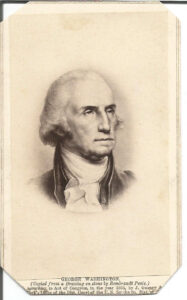
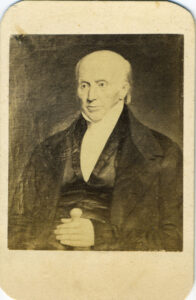
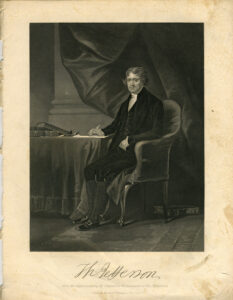
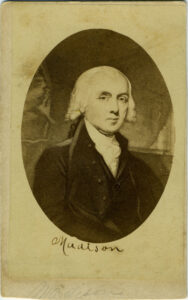
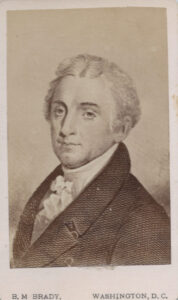
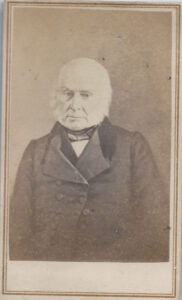
2nd Political System (1829-1849)
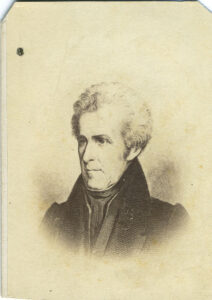
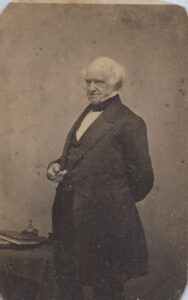
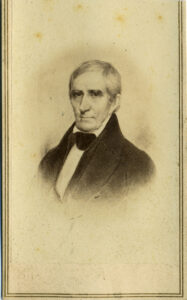
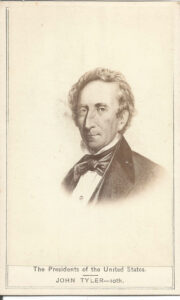
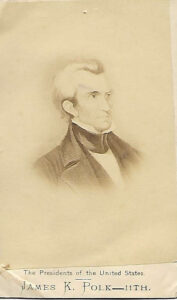
3rd Political System (1849-57)
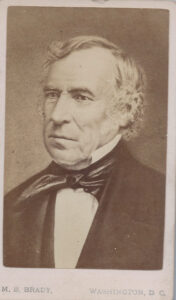
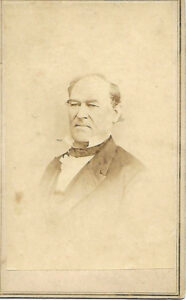
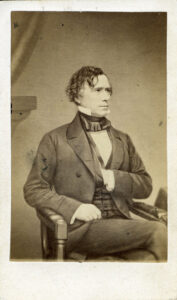
4th Political System (1857-61+)
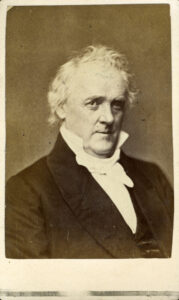
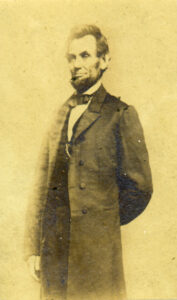
Some Political Icons – 1st System
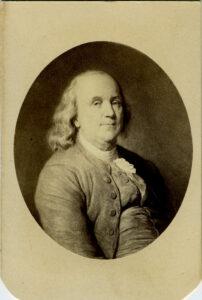
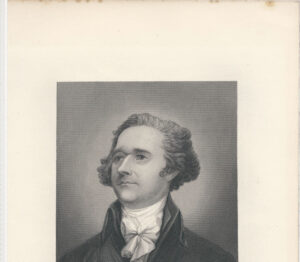
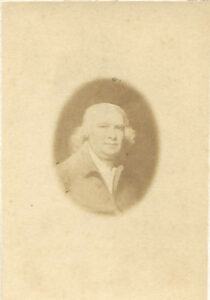
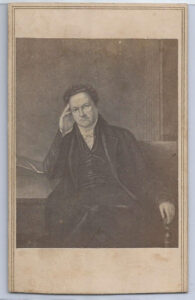
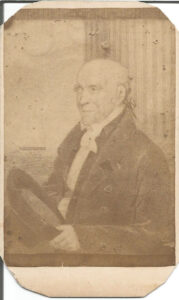
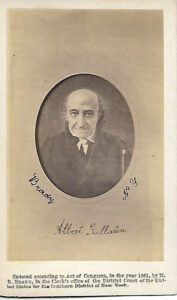

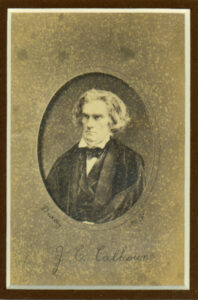
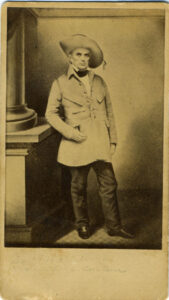
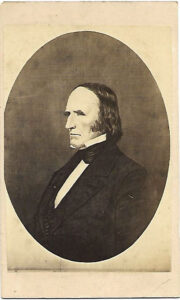
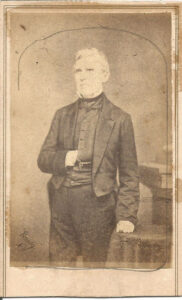
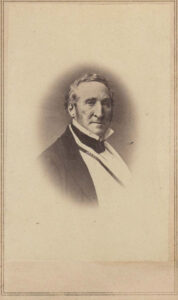
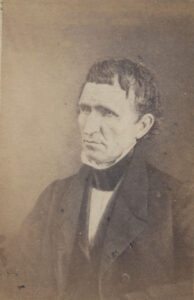
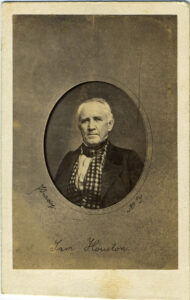
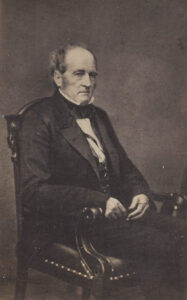
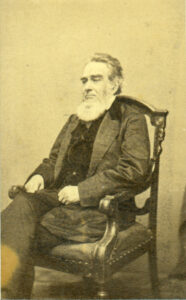
2nd System
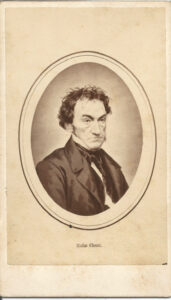
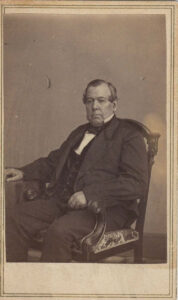
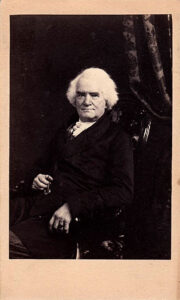
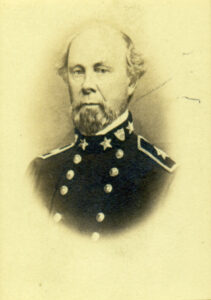

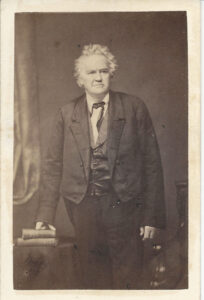
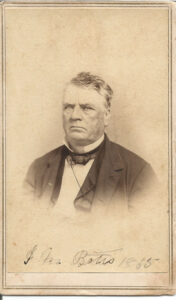
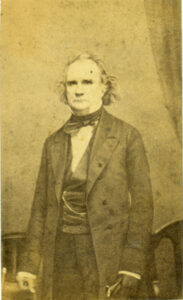

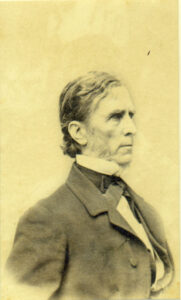
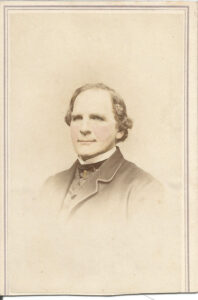

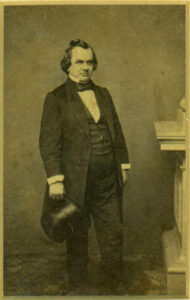
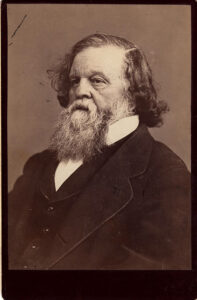
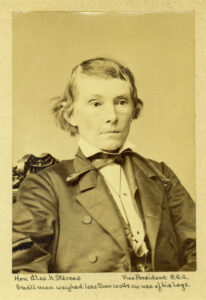
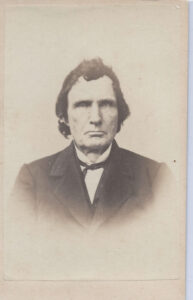
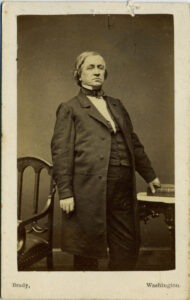
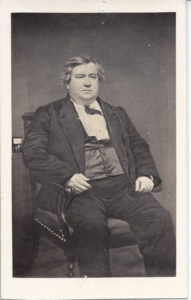
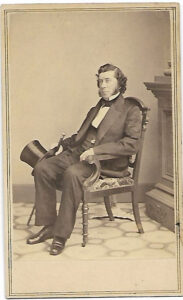

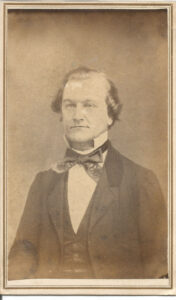
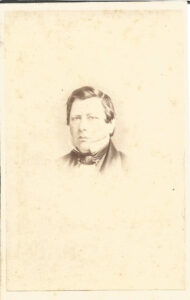
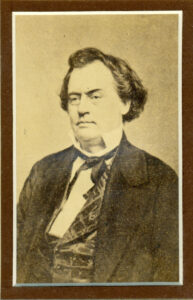
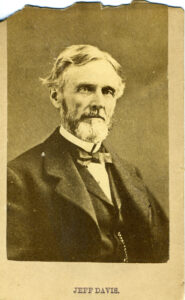
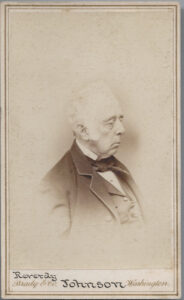

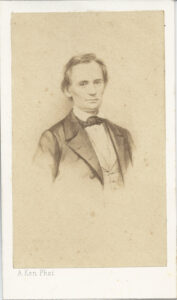
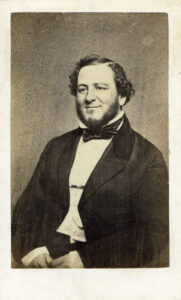
Third System
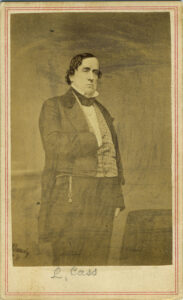
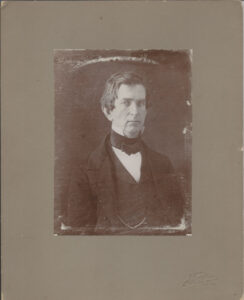
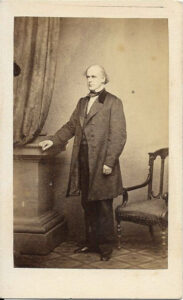

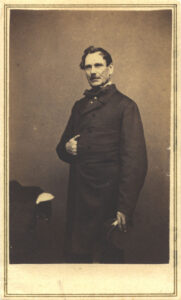
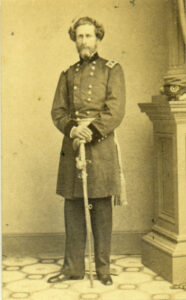
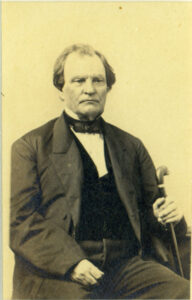
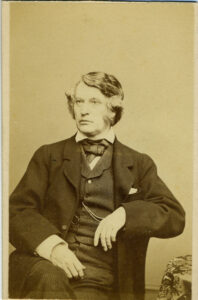
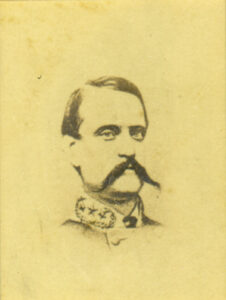
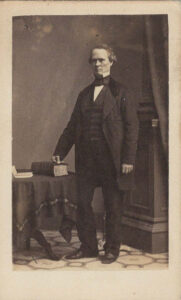
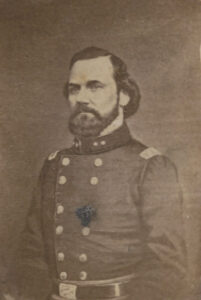

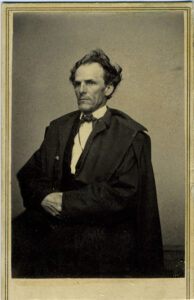

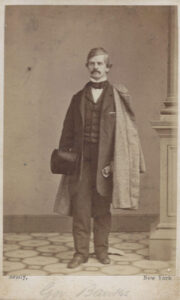
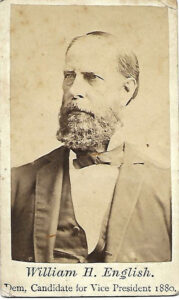
4th System
